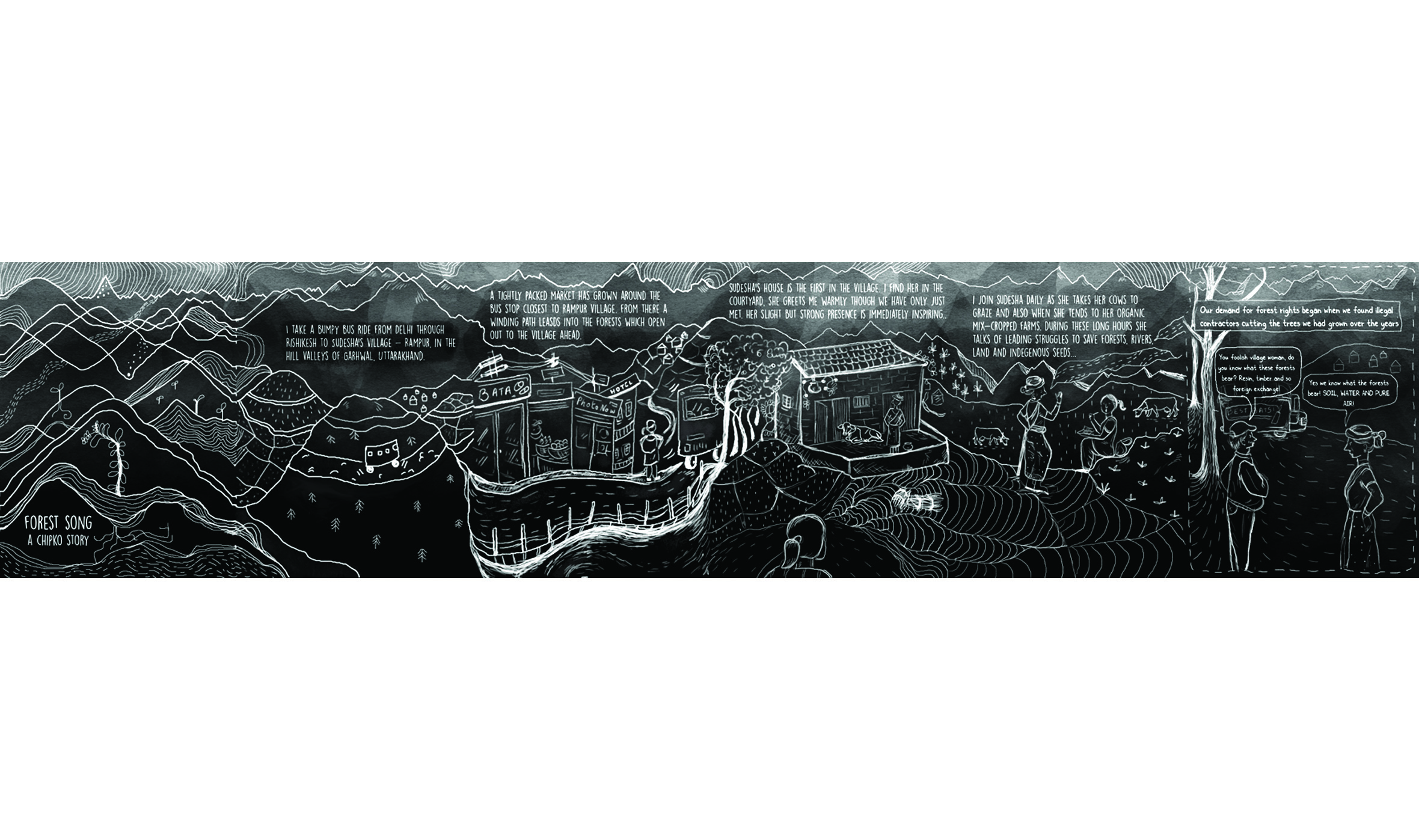A retrospective of art projects, focusing on sustainable development, is currently underway at Khoj Studios, Delhi. The series is titled Evidence Room, and the projects are selected from Negotiating Routes: Ecologies of the Byways, a public art initiative also supported by Khoj from 2010-2014. Mario D’Souza, curator of the retrospective, speaking with Guardian 20 on the significance of the exhibition, says, “We have chosen 13 projects for the show. We have tried to comprehend the broad change that has taken place on various sites where the artists have worked with ecology.” Elaborating further, D’Souza adds, “Through the projects, we are trying to understand how a certain site becomes a sort of evidence of ecological damage. The artist when trying to create a narrative becomes a witness to the site.”
A white radio emitting an unfamiliar language, and glass containers holding plant twigs in liquids, are kept in one of the rooms at Khoj Studios, garnering undivided attention. Upon enquiring with the artist, one learns that advertisements in the Garhwali language, focusing on the importance of medicinal herbs, are being played on loop. The liquid is formaldehyde which is used to preserve the herbs. The artist behind this project, Aastha Chauhan, has been working on the usefulness of medicinal herbs since ten years now. Titled Chamba ke Gharelu Nuskhe aur Muft ki Salah, the project focuses on the importance of age-old remedies that use herbs grown in Chamba. “Even before I received the grant, I was recording local home remedies and had realised that there is a complete disregard for the same. For any ailment, people turn to allopathy which is clearly not good. Here I have recorded 30 clips of advertisements by Chamba residents in Garhwali and displayed bottled seeds of indigenous plants,” says Chauhan.
Chauhan’s work is ongoing in Chamba, and she is determined to bring back these indigenous herbs in common use. With Henval Vani, a community radio station in Chamba, Chauhan plans to broadcast the usefulness of the old remedies across 700 villages in the valley.
The idea here is to look at the changing nature of local ecologies, with rapid infrastructural development across the country.
One such project, which aims to look at the rapid urbanisation, is Badri Jal Abhiyaan. Here Asim Waqif and Vaibhav Dimri display a representation of the work they did at Badrinath in 2011. A small walkway of cement fibre board is constructed at the studio. A copper vessel with an inbuilt microphone is placed within. Above it sits a container filled with water. The visitors can hear the sound of a drop of water at short regular intervals. Waqif says, “I have been going to Badrinath for many years now and I’ve seen it change drastically over the years. Now it has become a ‘tourism pilgrimage’ sort of a thing. The idea of hygiene is such that everything we want to eat/drink needs to be handed over to us in a sealed packet. This results in a lot of accumulation of plastic, with plastic packets strewn all about and people not utilising the natural springs. We decided to bring a sort of awareness there.”

The duo has also researched the water sources mentioned in mythological texts and the mineral content of spring water. “After professional lab tests, we found that a spring called Kurm Dhara is exceptionally good — it has consumable drinking water. We created a water label and called it Kurm Dhara, cleaned the dirty taps, gave water in copper vessels and managed a piau,” adds Waqif. Despite having had limited impact, Waqif is not dissatisfied. He says,“Ours was like a gesture, but there is a lot of possibility of a larger project which can be done there. A larger body can take care of all the pilgrims’ points like Gangotri, Yamunotri, Kedarnath, Badrinath and so on. I am sure a long-term project can be planned there.”
Another fascinating display focuses on the natural ecosystem of the Chilka Lake. In The Messenger Sail, artist Jyoti Ranjan Jena uses Ravan Chaya, a form of shadow puppetry dance, to re-imagine Chilka. Using traditional folk-theatre, Jena has conveyed the current situation of a depleting natural ecosystem. “Centering on conversation, I have used three stories from different sources and have created the artwork. I am doing more research on the issue and will create something new on the subject soon,” says Jena.
Sunandita Mehrotra’s Re-visiting the Chipko Andolan, presents the personal narrative of Sudesha Devi, one of the foremost participants in the Chipko Movement. For the project, Mehrotra resided with Devi in 2013, consequently publishing an arty comic book representing the journey of Sudesha. The artist has illustrated herself and Sudesha roaming near her home, farm, working alongside the cows and singing songs. Mehrotra says, “The history of the Chipko Movement is not clearly documented. The men folk are represented as the face of the movement but the reality is far from it. Sudesha was one of the few women who rose as a leader during and even after the movement in her village. She now works on the anti-alcohol campaign, education for women and children, opening of bank accounts and much more.” Out of the three artworks on the same subject exhibited in Delhi by Mehrotra, one is a booklet and the other a video footage.
Various site-specific works comprising photographs, audio and video installations make this retrospective on sustainable development a unique show that’s more than a visit.
The exhibition is on view till 15 March

